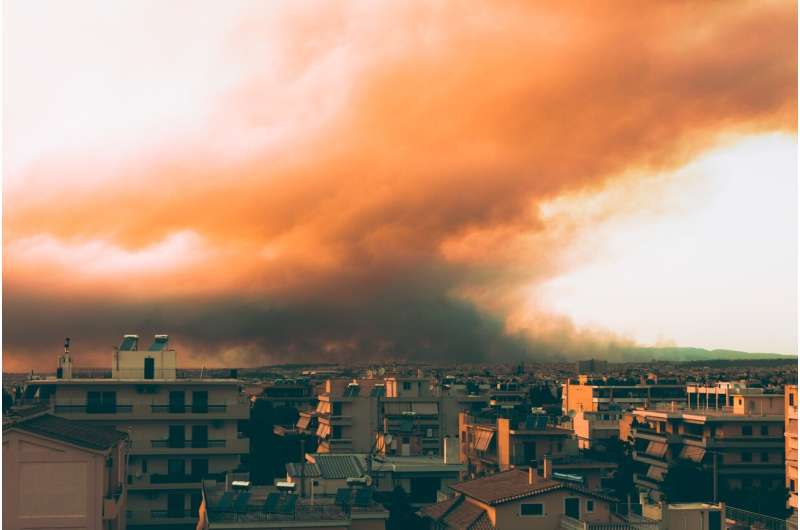
People exposed to a wildfire within a year after having lung cancer surgery have significantly lower chances of survival compared to lung cancer patients who are not exposed to wildfires, researchers from Emory University, the American Cancer Society and Yale University found.
For the study, 499,912 individuals who underwent surgical removal of non-small cell lung cancer (NSCLC) between 2004 and 2019, were selected from the National Cancer Database. Of those individuals, 168,645 (36%) were exposed to wildfires within a year of being discharged from the hospital, according to ZIP-code level data from NASA’s Fire Information Resource Management System.
The findings, published Thursday in JAMA Oncology, found those patients had worse overall survival than the other individuals in the study and that their chances of survival decreased the sooner the wildfire exposure occurred following their surgery. Individuals whose zip code overlapped with a wildfire event within three months of NSCLC surgery were 48% less likely to survive compared to patients not exposed to a wildfire event. Patients exposed to wildfires 4–6 months (38%) and 7–12 months (17%) following surgery also had lower survival rates than unexposed patients.
“This study shows that the health impact of climate change-related extreme weather events such as wildfires is multi-faceted and further-reaching than we typically think,” says Yang Liu, Ph.D., chair and Gangarosa Distinguished Professor in Gangarosa Department of Environmental Health at Emory’s Rollins School of Public Health.
Satellite data provided by NASA enabled researchers to identify wildfire events globally and for an extended period.
“In addition to the health consequences of inhaling fire smoke, the interruption of care, anxiety due to property loss or financial hardship, as well as the mental trauma associated with experiencing a fire event can work together to negatively affect people’s health and well-being,” Liu adds. “The impact of smaller fires in the eastern U.S. also shouldn’t be ignored as they are often much closer to people.”
Lung cancer is the second most common cancer diagnosis in the United States and the leading cause of cancer-related deaths. Meanwhile, exposure to air pollution decreases the chance of lung cancer survival, and wildfire smoke is a major contributor to air pollution.
“Surgery for lung cancer is a major operation with serious side effects and recovery takes months,” says Leticia Nogueira, Ph.D., scientific director of health services research at the American Cancer Society. “During recovery, individuals struggle with physical (diminished pulmonary and physical function, decreased mobility, increased fatigue), psychological (stress, anxiety, depression), and socioeconomic (out-of-pocket costs, ability to remain employed or maintain income levels, etc.) consequences of surgery, which can impact patients’ ability to prepare and respond to the threats posed by an approaching wildfire.”
However, air pollution was only one of several health threats—such as water and soil contaminations, increased stress and mental health issues, displacement and disruption to health care access—posed by wildfires that can negatively impact the long-term survival of individuals recovering from lung cancer surgery.
“While wildfire smoke contributes to worsening air quality, which has been associated with increased cancer risk, proximity to wildfires poses several challenges that go beyond inhaling polluted air,” adds Nogueira. “These include the stress associated with the threat wildfires pose to property and life, the financial resources necessary to evacuate or shelter in place, and the health hazards associated with exposure to contaminated water and dust. The additional challenges are especially concerning for cancer patients and survivors, who are already dealing with the physical, psychological, and socioeconomic consequences of cancer diagnosis and treatment.”
The researchers warn the health risks from wildfires will only intensify in the era of climate change.
“Climate change will result in reduced rainfall, higher temperature, and dryer soil in much of western North America, further exacerbating wildfire activity in the region,” Liu says. “We will see a longer fire season and more frequent, more intense fires.”
More information:
Danlu Zhang et al, Association of Wildfire Exposure While Recovering From Lung Cancer Surgery With Overall Survival, JAMA Oncology (2023). DOI: 10.1001/jamaoncol.2023.2144
Journal information:
JAMA Oncology
Source: Read Full Article


